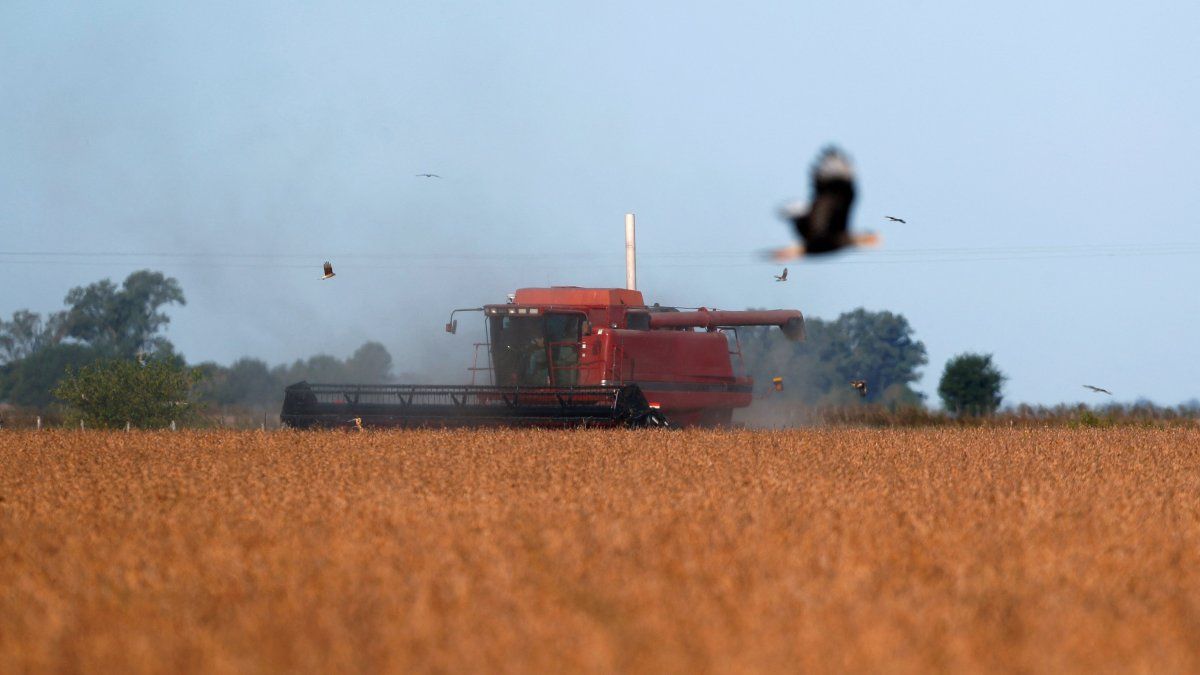The soybean harvest throughout the country with an expectation of returns between acceptable and good. Plantings were, on average, somewhat later than ideal, but the soybean crop has good adaptive capacities and a production is estimated that could exceed 3 million tons, although the projections are still premature.
A difficulty facing the analysis of the crop situation in recent years is the discrepancy between official area estimates and the estimates of seed companies and institutions. Specifically, the area officially estimated by DIEA-MGAP It is somewhat below 1,100,000 hectares, but the companies indicate that the surface area is close to 1,200,000 hectares. Considering this, the Opypa (another MGAP department) carries out an estimate based on the exportswhich is more aligned with those proposed by companies (graph).
Beyond this, it is clear that the agriculture is in recovery after the hard drought from last year and soy It will have a great harvest in historical comparison, although somewhat below the great harvests of the middle of the last decade.
Contrary to what happens in Argentina -where there are large areas of relatively homogeneous soils- Uruguay It is a true mosaic of diverse productive situations in terms of soils, orography and even climate, with important differences between the north, the center and the south. So it is difficult to make averages. In any case, in general there are good performances in all regions; the greatest potential is in the agricultural coastline, with many farms above 3,000 kg/ha. In the rest of the regions, yields tend to be somewhat lower because the quality of the soils is somewhat lower.
National average yield estimates are around 2,600 kg/ha; With an area of 1,200,000 hectares, this would yield a production of slightly more than 3,100,000 tons. In any case, the yield is still being defined due to the aforementioned delay in sowing.
The price of soybeans in the markets
The price of the soy The producer price has moved around US$400/ton in recent weeks, although in recent days it has operated below that level. After touching 450 US$/ton at the end of 2023, confirmation of a great harvest in Brazil and the recovery in Argentina have put pressure on prices, which fell by about US$50/ton compared to those references.
At first the producers were reluctant to sell at these new values; Furthermore, coincidentally, the dollar had a significant drop in the local market. But with a more stable price scenario and a dollar that has had a slight recovery, more sales have begun to be made. Even so, there are market analysts who recommend waiting to sell, paying attention to how the climate market develops in USA: In Chicago, investment funds have been very sold and it is estimated that they should correct that position in the coming weeks, which could warrant a certain recovery in prices.
In any case, the margins of the soy They will be acceptable to good, because – although the price is not as expected – some costs have also decreased and yields have returned to normal levels. This will allow a recovery in agriculture that, although it will not be of great strength, puts the sector back on track. This year’s margins will be used in part to cover the financial losses of the last cycle and the rest to bet on crops again in the new cycle. The agriculture It has strong inertia and the business depends on continuity, year after year, to average prices and climatic variations.
Source: Ambito




